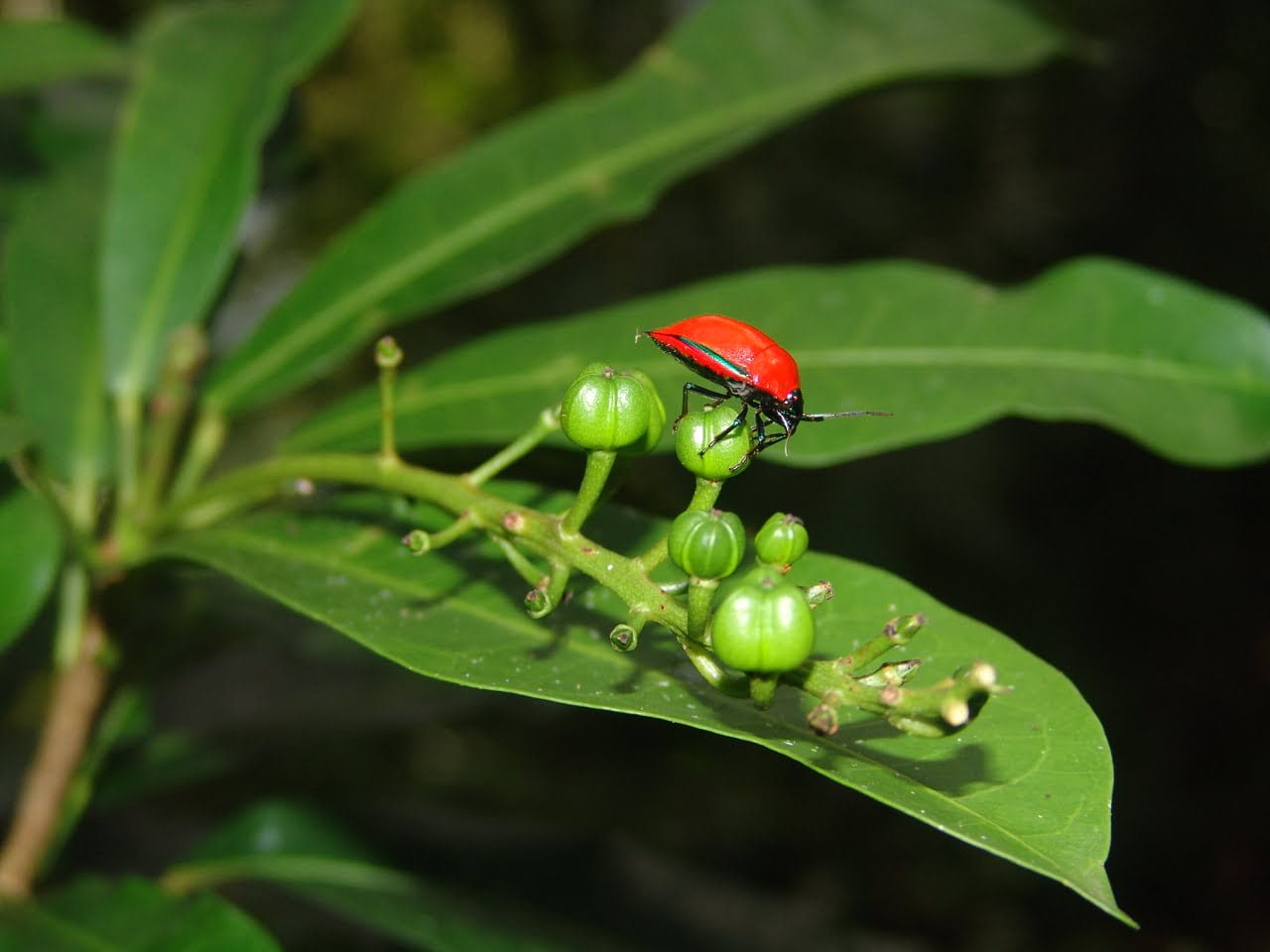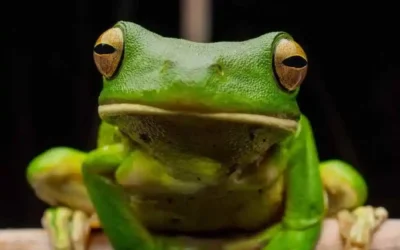Primitive Animals of an Ancient Rainforest Environment
Ancient rainforest, situated right here in Tropical North Queensland contains some very primitive animals. It’s important to note that the word primitive should not be interpreted as backwards and on the way to extinction. The word primitive simply means that the animal in question, retains ancient features which have disappeared elsewhere in the animal kingdom. Most people tend to think of vertebrates when they think of animals, especially birds and mammals. But the invertebrates, animals without a backbone, are the really primitive denizens of the rainforest. For starters, the invertebrates were the first animals to move onto land from their former watery realm. This explains why the first vertebrates to go onto land, the amphibians, were all predators.
The earliest animals needed moist conditions and tended to breathe with modified gills. The most primitive of modern day spiders still breathe with what are known as book lungs, a specialised kind of gills contained in a wet chamber. Some transitional spiders use both book lungs and the rudiments of tracheae, small pipes which allow oxygen direct access to the tissues using simple passive diffusion. This in itself limits the size these ancient creatures can reach.
During the Carboniferous Period when the world’s first forests appeared, many spiders and insects reached amazing sizes thanks to the higher levels of oxygen in the air. This meant that the air was extremely combustible and fires were no doubt very common. Some of the early settlers on land remained limited by their need for moist conditions and today, examples of these intriguing creatures include flatworms, velvet worms, snails, woodlice and millipedes.
Land snails have simple lungs which are nothing more than moist chambers lined with blood vessels. Woodlice, also known as pill bugs, are crustaceans that have changed very little since they wandered onto land. They still breathe with gills attached to the base of their legs. It has recently been shown that insects are in fact strongly modified crustaceans better suited for life on land. Their numerous legs have been reduced to six, they lost one pair of antennae and they replaced their leg gills with tracheae. Millipedes are relatives of the insects that kept the multiple legs of their crustacean ancestors, each body joint having two pairs of legs. Millipedes have special glands on the sides of their bodies that squirt a noxious substance when they are threatened. They live in moist rotting vegetation.

Flatworms are very ancient rainforest animals that completely lack a hollow body cavity and have very simple enclosed kidneys. There are four main types of flatworms, two of them completely parasitic. The parasitic flatworms are the flukes and the tapeworms. The two free living flatworms are the turbellarians and the acoels. The acoels have no gut whatsoever and absorb their food through their bellies. Turbellarians are what most biology books present as flatworms. One group of these turbellarians, the planarians, made their way onto land where they still live almost unchanged. Their simple heads usually look like pickaxes or the end of a shovel. Most have simple eyes that detect the difference between light and dark along the front edge of the head. All flatworms move using cilia, a kind of undulating lash containing retractable fibres located on the underside of their bodies. They are generally very small and are only ever seen during the wet season during and after rain.
Velvet Worms are an unusual group of animals which used to be considered the ancestors of all the arthropods (trilobites, crustaceans, arachnids and insects). The oldest representatives of this group have been found as fossils in the Burgess Shale in Canada. Their heads have a jointed pair of fleshy antennae and two stubby arms containing slime glands. The slime glands excrete a sticky substance either in defense, or for immobilising prey. The mouth has two pairs of claws of similar type to the claws on the feet. Velvet worms have a long series of stubby, fleshy legs, each with a pair of claws used for negotiating difficult terrain and a foot cushion. Each pair of legs is moved together slowly to avoid tripping on the other legs. Velvet worms breathe through their skin. These small, beautiful creatures are found in Barron Gorge if you look in the right places.
Scorpions were the first arthropods that went onto land. They are usually classified as arachnids, which would make them closely related to spiders, harvestmen and mites among others. Recently several experts have started regarding them as land based eurypterids (sea scorpions). Unlike the true arachnids, they have a movable tail with a sting on the end. The chelicerae, the main mouthparts, are shaped like miniature pincers. The first pair of legs, known as pedipalps, are shaped like crab claws. On the underside of their abdomens, scorpions have a special pair of comb shaped structures known as pecten. These pecten appear to have a sensory function, possibly sensing humidity and movement in the air.
The so-called primitive “insects” of ancient rainforest are a group of insect relatives that live in rotting vegetation. Their mouthparts are covered by skin, unlike true insect mouthparts. All of these animals are flightless and tiny. Proturans, also known as coneheads, are the most primitive. They have no eyes or antennae. Instead they use their first three pairs of legs as a substitute for the missing antennae. The conical head has a pair of eye like structures known as pseudoculi of unknown function. After each moult the proturans add extra segments to their bodies. Diplurans most of all resemble silverfish with two prongs on the end of the abdomen rather than three. They have very long antennae. Their abdomens have eversible vesicles for absorbing water. The collembolans, known as springtails, are very unusual. On the end of their abdomens they have a fork like structure which can be spring loaded in order to flick the animal to safety when threatened. They have a tube shaped appendage that contains eversible vesicles like the diplurans.
Australian Ancient Rainforest Facts by Skyrail Ranger Tore Lien Linde.



